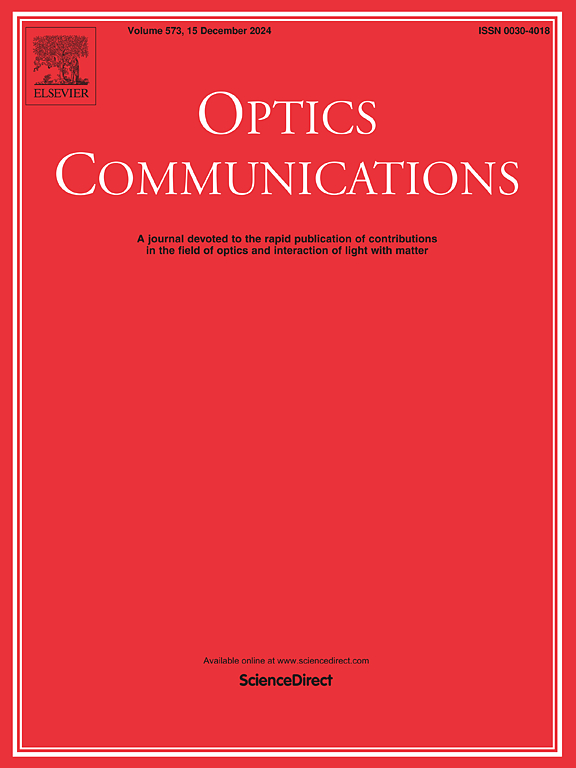To double transmission distance of optical fiber communication based on MIMO-CMA and MRC
IF 2.2
3区 物理与天体物理
Q2 OPTICS
引用次数: 0
Abstract
The relentless pursuit of longer data transmission in fiber optic communications has led to the development of advanced signal processing techniques for multiplexing and detection. In this context, this paper presents a thorough investigation into the applicability of a novel Maximum Ratio Combining Algorithm (MRC) for Polarization Division Multiplexed (PDM) systems. Towards this objective, a detailed simulation study was carried out on commercial software, focusing on a PDM 16QAM long-haul coherent transmission system. The system leveraged the MIMO-CMA for equalization and MRC for signal combining, aiming to enhance the overall system performance. Furthermore, this research extended to an experimental demonstration of a 32G-Baud PDM-16QAM coherent transmission scheme. The experimental setup employed the MIMO-CMA and MRC techniques for signal processing over long-haul standard single-mode fiber (SSMF). Results from the experimental study are promising, revealing that the system utilizing MRC-based PDM-16QAM can achieve a maximum Signal-to-Noise Ratio (SNR) gain of up to 2.3 dB, thereby almost twice the optical fiber transmission distance can be achieved. The findings of this paper confirm the viability of the proposed scheme for improving the performance of PDM coherent transmission systems. The research underscores the potential of PDM and MRC as powerful tools for next-generation long-haul coherent transmission system.
求助全文
约1分钟内获得全文
求助全文
来源期刊

Optics Communications
物理-光学
CiteScore
5.10
自引率
8.30%
发文量
681
审稿时长
38 days
期刊介绍:
Optics Communications invites original and timely contributions containing new results in various fields of optics and photonics. The journal considers theoretical and experimental research in areas ranging from the fundamental properties of light to technological applications. Topics covered include classical and quantum optics, optical physics and light-matter interactions, lasers, imaging, guided-wave optics and optical information processing. Manuscripts should offer clear evidence of novelty and significance. Papers concentrating on mathematical and computational issues, with limited connection to optics, are not suitable for publication in the Journal. Similarly, small technical advances, or papers concerned only with engineering applications or issues of materials science fall outside the journal scope.
 求助内容:
求助内容: 应助结果提醒方式:
应助结果提醒方式:


